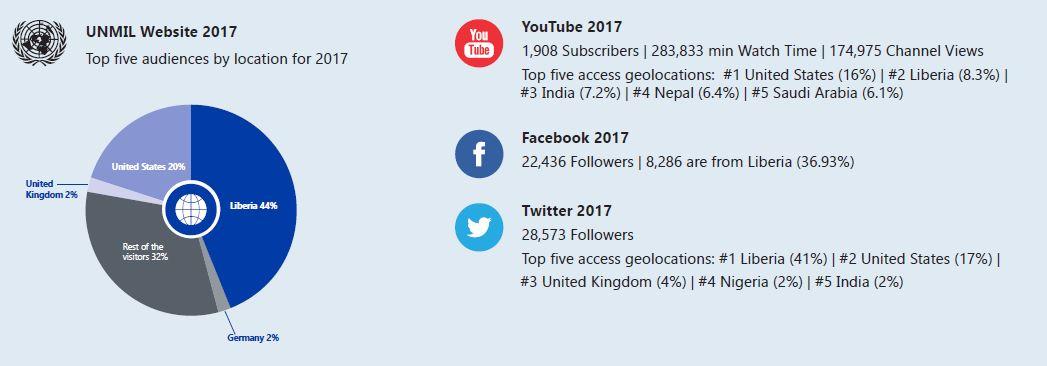
With the advent of new communications technologies, peacekeeping missions are using social media to increase their reach and engagement.
Whether digital diplomacy, e-diplomacy or cyber diplomacy, UNMIL’s Strategic Communications Unit has increasingly used digital communications to provide information and to communicate with both its local and international audiences.
As the conflict in Liberia receded, the important but not necessarily headline grabbing work of the UN was going on at full strength. With the advent of social media, the Mission had tools to reach larger audiences locally and around the world with breaking news and features using radio, video, press and photo. With Twitter and Facebook, for example, some 50,000 people follow UNMIL and often engage dialogues, much as UNMIL Radio has done with its call-in shows.
In addition, during discrete mediation and good offices work, the Mission has used digital diplomacy to send messages out via social media to stress aspects and objectives of the ongoing work.
As the Mission was developing contemporary tools and platforms, however, Liberia’s use of them remained low. As of 2017, out of approximately 3.8 million mobile subscribers, about half a million used the internet, while only 7 per cent had Facebook accounts. But as the country’s three mobile phone companies compete for a growing market in a now peaceful country, internet and social media usage is growing fast. UNMIL’s web audience is mainly outside the country (60 per cent), with 40 per cent of the content being accessed by people in Liberia.
During the 2017 election period, UNMIL used digital outreach more dynamically than usual by producing and webcasting messages by the Head of Mission to young people, voter education, and news of developments. UNMIL used its social media resources to support Liberia’s National Elections Commission (NEC) with civic education, targeting in particular women and first-time voters.
In an earlier example of digital diplomacy, UNMIL used webcasts and social media for the Remembering Slavery Global Student Videoconference, which linked high school students in Monrovia with their counterparts in Kingston, Jamaica and with UN Headquarters in New York to learn about the consequences of the transatlantic slave trade.
UNMIL Radio’s reach was expanded thanks to live streaming of its programme and also by podcasts posted on the Mission’s website. The station used metadata to determine what stories the audience was most interested in and where listeners were located (70 per cent were in the US). Facebook and Twitter were used to promote the service, with live broadcasts, and podcasts.
The strategy behind digital diplomacy was focused on message dissemination in support of the Mission’s mandate. Content echoed the Mission’s work in peace promotion, reconciliation, human rights, rule of law and justice. Mission publications were posted on the web and diffused via the latest platforms. Video clips and stories were posted on YouTube.
Additionally, Strategic Communications’ media monitoring service posted and emailed daily analyses of Liberian media reports to some 250 partners.
Digital platforms have also meant that a peacekeeping mission’s legacy remains alive and visible well after the mission’s closure, on a site archived by UN Headquarters in New York. New technology ensures that researchers and students will have far greater access to information on multiple platforms about Liberia and the work of UNMIL, than missions in the pre-digital era ever imagined.






